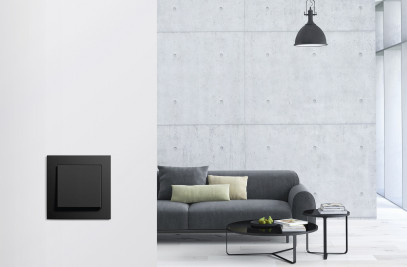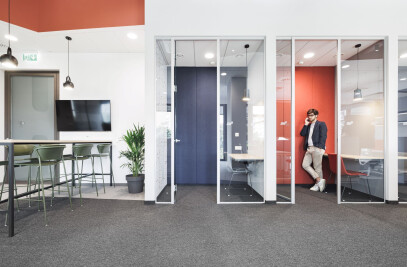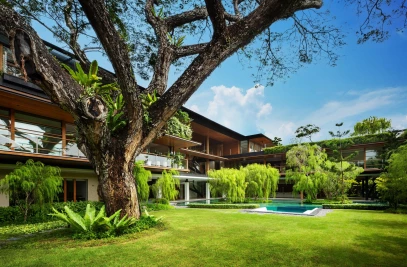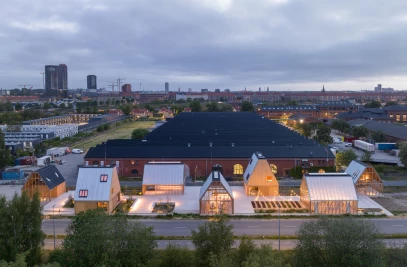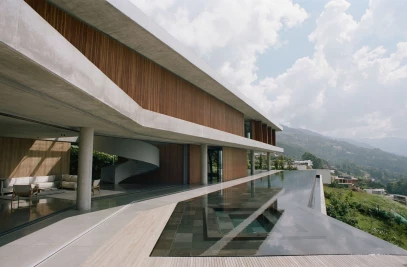Modern and archaic at the same time, the Urban Environment House for the Urban Environment Division of the City of Helsinki combines new building technology with references to the history of architecture. The design by Lahdelma & Mahlamäki Architects is located in an area that was once occupied by a harbour and sawmill industry but is now one of the most important growth areas of the city.

Providing a new home for city planning officials, the building strives to demonstrate the high standards of the City’s building and urban planning disciplines. The building is also designed to invite citizens to utilize city services and participate in civic activities. The main facades of the building open to the middle of the block towards a new public square and a pedestrian street. Two storey-high brick arches form an arcade, which continues to the main lobby, thus connecting the street space and the interior of the building. The architects explain that as historicist elements, the arches and arcades link the Urban Environment House to the history of architecture, resulting in a building that is both modern and archaic.

A large building, the Urban Environment House’s massing, along with its functionality and HVAC system, are broken down into three independent parts. These parts are separated by rooftop terraces and distinguished with differing mortar joint styles and the varying application of wood, concrete and copper in the detailing.

The building takes on a rough materiality, achieved by exposing the HVAC system and in the selection of the final finishes. It is largely constructed with an advanced combination of brick cladding and cast-in-place concrete structure, which make it possible to realize the entry brick arches and a feature half-arch at the corner of the building.

Key to the project was gathering 1,500 officials who work in several locations into this new building, thus providing a sense of togetherness in a new and modern workspace. Workshops were held to involve the users of the building to ensure the spaces serve their purpose.
The interior layout features a diverse mix of ample spaces, with openings connecting floors, auditorium style staircases and street-like passages in place of isolated floors and lobbies. Efficient workspaces combine a deep building frame with higher-than-usual-floor heights and large windows, which allow daylight far into the building. A range of spaces from open and social to quiet and concentrated are available for meetings or concentrated office work.

To counterbalance work, the Urban Environment House also includes facilities for exercise, cafeterias and break rooms. Rooftop terraces with distinct pavilions can be used further for either relaxation or work. Each terrace is different, varying in shape, materials of the pavilion and vegetation type.

Finally, from the view of sustainable development, it was seen as essential that the building serves it purpose well into the future and suits different kinds of uses during its life cycle with only minor modifications. Designed to be nearly zero-energy, a portion of renewable energy used in the building is produced on-site with solar panels. The 5,000-square-meter green roof features more than 22,000 plants, such as herbs and shrubs and decaying wood for fungi and insects, thus contributing to biodiversity and preventing urban floods by detaining stormwater. Further, the building is planned with spaces for 590 bicycles but only 75 cars, thus encouraging the bicycling, walking and public transportation instead of private cars.

The Urban Environment House as won the TEKLA BIM Award 2020 for Finland and the Baltics, which is awarded for the extensive and advanced utilization of building information modelling technology in a construction project.



























